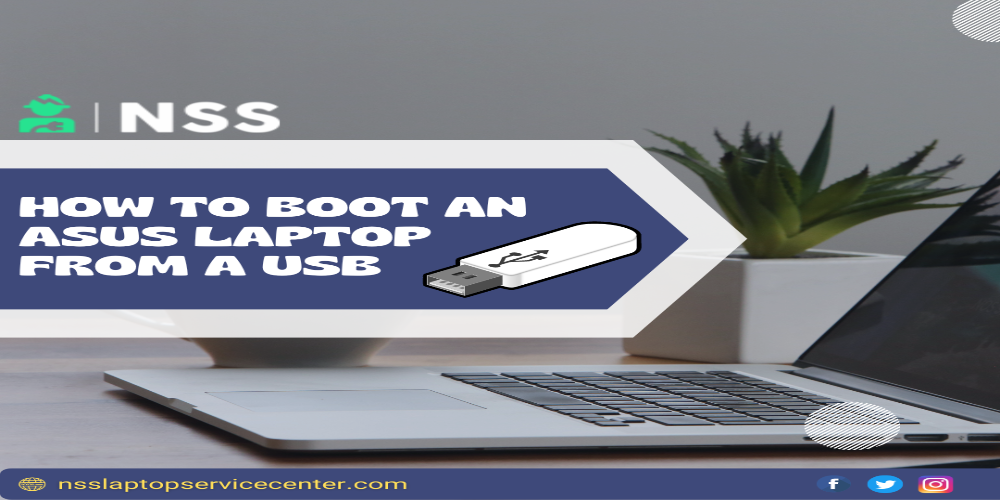
To boot your Asus computer from a USB drive or CD-ROM, you must go to BIOS and create a configuration.
On the superuser forums, a poster featuring a Zenbook checked with an Asus technician and was told that Windows 8 could not be booted from his BIOS.
-
I've posted some workarounds for this issue at the bottom of the page if you'd like to try them out - they're listed under Workarounds for Asus Windows 8. Booting from USB with BIOS
-
Asus provides instructions for booting Windows 10 from a flash drive or CD.
-
(If you don't know how to get into the BIOS, scroll down a bit; I've outlined the process for that).
-
Boot from Asus X555L Bios USB disk drive
-
Make sure to select [BOOT] when you enter the BIOS setup. Then, enable Launch CSM. (compatibility support module)
-
Type Security -> Disable Secure Boot Control
-
Press F10 to save your configuration changes.
You can boot your computer from a USB drive/CD-ROM using the following two methods:
Approach #1: Enter BIOS -> Select Save and Exit -> Select USB Drive/CD-ROM [Boot Override]
Approach #2: Hold ESC and Power. Press the button to power the system. You can choose the boot device from the list.
-
ASUS How To Boot From a USB Device (Flash Drive or Other USB)
-
How To Enter Bios
-
According to Asus, because of the Fast Startup feature, you can't just press F2 to enter BIOS configuration when booting the computer.
Check out the steps below to enter BIOS configuration.
1. Hold and press [Shift]. After that, switch off the computer.
2. Push and hold the F2 button. After that, click on the power button. Don't let go of the F2 button before the BIOS screen display.
3. You'll then be able to access the BIOS configuration.
Also Read: Compatible Upgrade For ASUS TUF Dash F15 & Repair Cost
Also Read: How to Enter Bios in Asus Laptop
Asus Windows 8 Workaround
Below is a workaround for Asus Windows 8 when unable to boot from the USB option in BIOS. (Original instructions can be found here).
-
Plug-in USB drive
-
Power on your Zenbook laptop
-
Press ESC or F2 to enter UEFI (BIOS).
-
Boot tab: Disable Fastboot (*)
-
Press F10 to save and exit
-
Immediately press ESC or F2 again
-
Under the Boot tab, you will see your USB drives - change the order
-
Press F10 to save and exit
-
The Zenbook should boot from the USB drive.
-
* Need to "Enable CSM" when booting in legacy mode.
-
The poster states that a more recent firmware version may be required if the above does not work.
-
Another Super User poster provided an additional fix that resolved the issue for many Asus users.
-
turn on the computer
-
Press F2 to enter BIOS
-
Press the Tab to boot
-
Make sure Secure Boot is disabled
-
Select "CSM + UEFI" in the OS mode selector
-
then press F10
-
Press and hold F2 to enter the BIOS
-
Check boot -> check boot priority to see if the attached USB
-
USB flash drive shows a boot reference.
-
Instructables has put together a helpful table of USB flash drive boot references. When you boot your Asus computer from the
USB device, you are running the computer with the operating system installed on the flash drive.
This is compared to normal behavior when you boot your PC (install and run an operating system on the internal hard drive). Windows, Linux, or something else.
It usually takes only 10-20 minutes to complete.
Also Read: ASUS laptop service center in Dehradun
Also Read: Asus Authorized Service Center Near Me Bhopal
Conclusion :
I won't say much, as the blog has informed you how to open a DVD drive on a laptop. It is an easy process, and you can use it for various purposes.
Frequently Asked Questions
Popular Services
- MacBook Battery Replacement Cost
- HP Printer Repair in Delhi NCR
- Dell Laptop Repair
- HP Laptop Repair
- Samsung Laptop Repair
- Lenovo Laptop Repair
- MacBook Repair
- Acer Laptop Repair
- Sony Vaio Laptop Repair
- Microsoft Surface Repair
- Asus Laptop Repair
- MSI Laptop Repair
- Fujitsu Laptop Repair
- Toshiba Laptop Repair
- HP Printer Repair Pune
- Microsoft Surface Battery Replacement
- Microsoft Surface Screen Replacement




